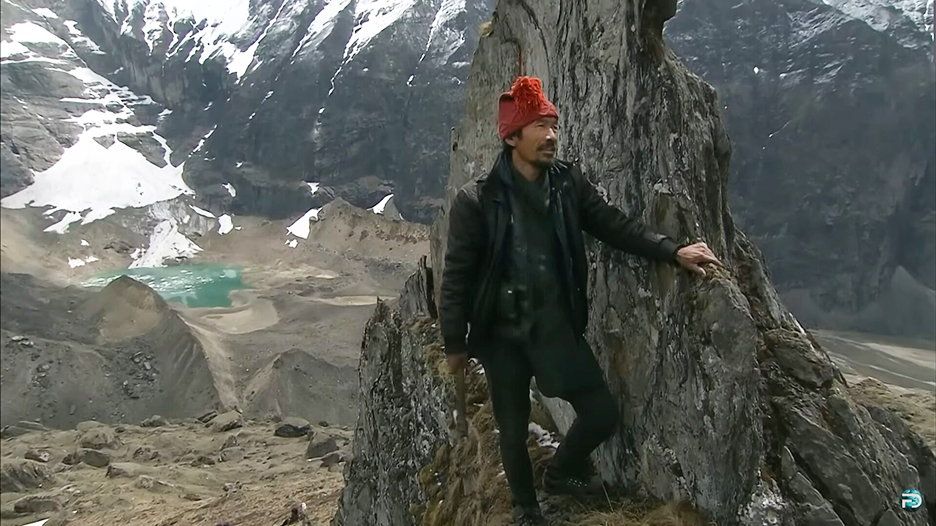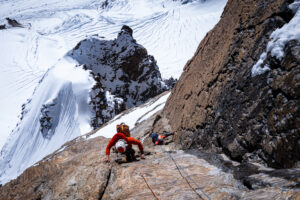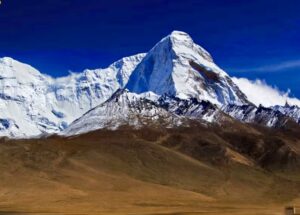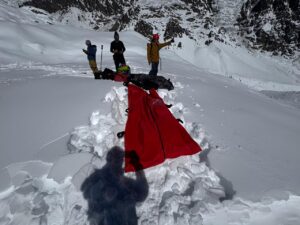On the slopes of the Himalaya grows something which is worth its weight in gold. It’s called Yarsagumba and looks like a small, yellowish-brown tuber, about the length and width of a pinky finger, but more gnarled.
It isn’t a root at all, however, but the body of caterpillar which has been infected with a cordyceps fungus. The fungus consumes the innards of the caterpillar, killing it, then grows out of its forehead, causing a small stem-like structure to emerge from the ground.
For 1,500 years, the Yarsagumba has been an integral ingredient in traditional Chinese medicine. In addition to promoting general health, it’s especially prized as an aphrodisiac. It’s so desirable — and so difficult to obtain– that prices are high, and rising daily.
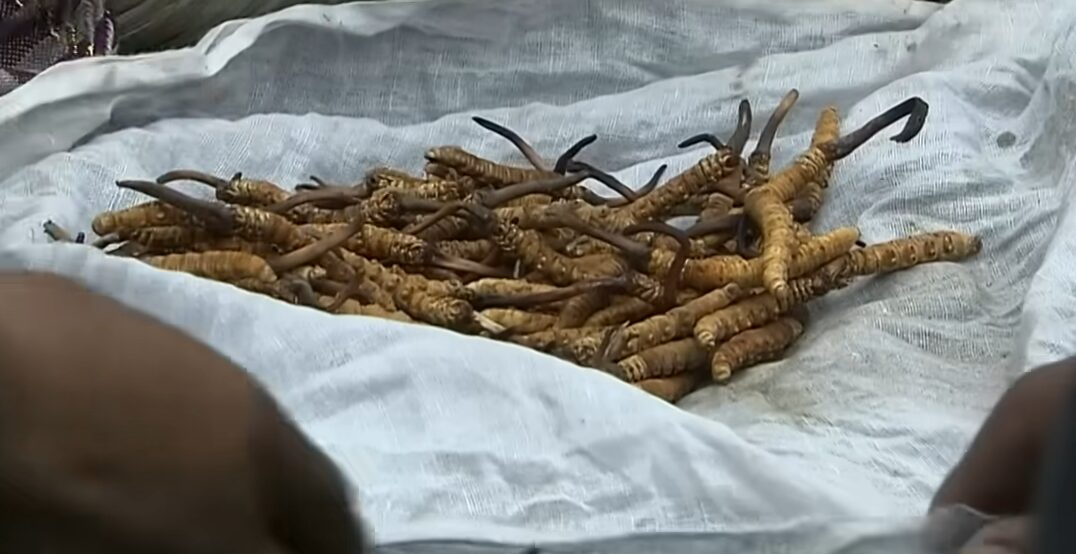
A small fortune in Yarsagumba. Photo: Screenshot
Invoking both melancholy and whimsy, the film explores the odd reality of the Yarsagumba and the lifestyle its trade has created. It introduces us to the strange dual makeup of the Yarsagumba– both insect and fungus– and the desperate desire it commands.
The gold hunters
Every spring, thousands of poor Nepalese men, women, and children leave their homes for the mountains. Some of them, the film tells us, will not return. Breathtaking shots of the scenery also provide all that is needed to explain the danger. The slopes are very high up, very steep, and very cold.
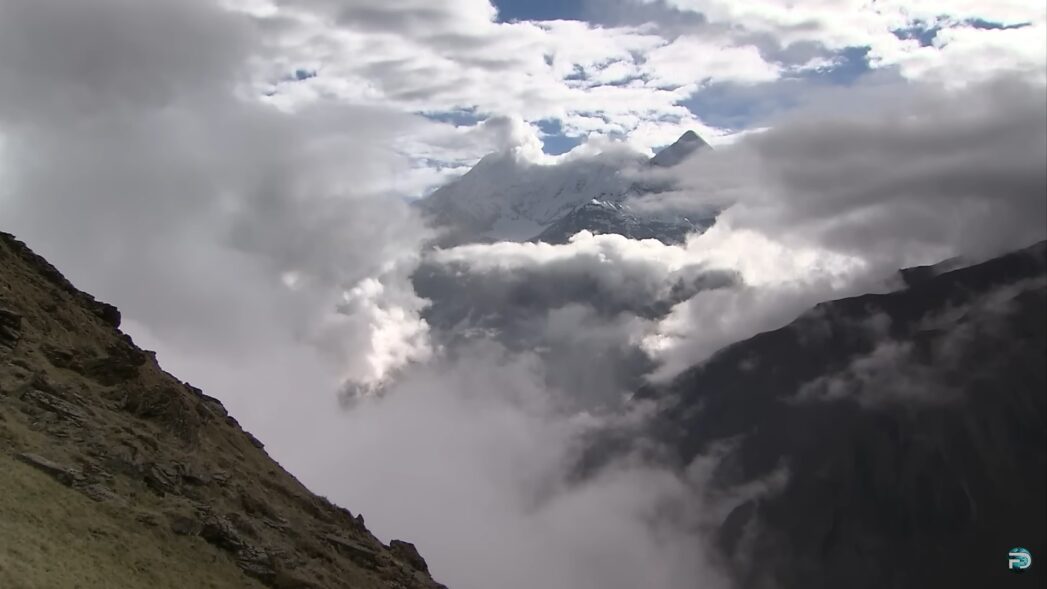
Sweeping landscape shots drive home the wild, remote beauty of the Himalaya — and the danger the Yarsagumba pickers face. Photo: Screenshot
The film follows the family of Suga Lal, an impoverished farmer who is training his 12-year-old son Raj to harvest Yarsagumba. After the long journey from their village, they crawl together along the steep slopes, looking for the small brown “stems” of fungus.
Over the course of the film, Raj goes from novice to master, his keen young eyes allowing him to make a good harvest, even after his father loses much of their take in a dice game. But, as Suga Lal himself tells the filmmakers, the young man’s future is unknown.
“In fifteen years’ time,” Suga Lal predicts, “there will be no more Yarsagumba left.”
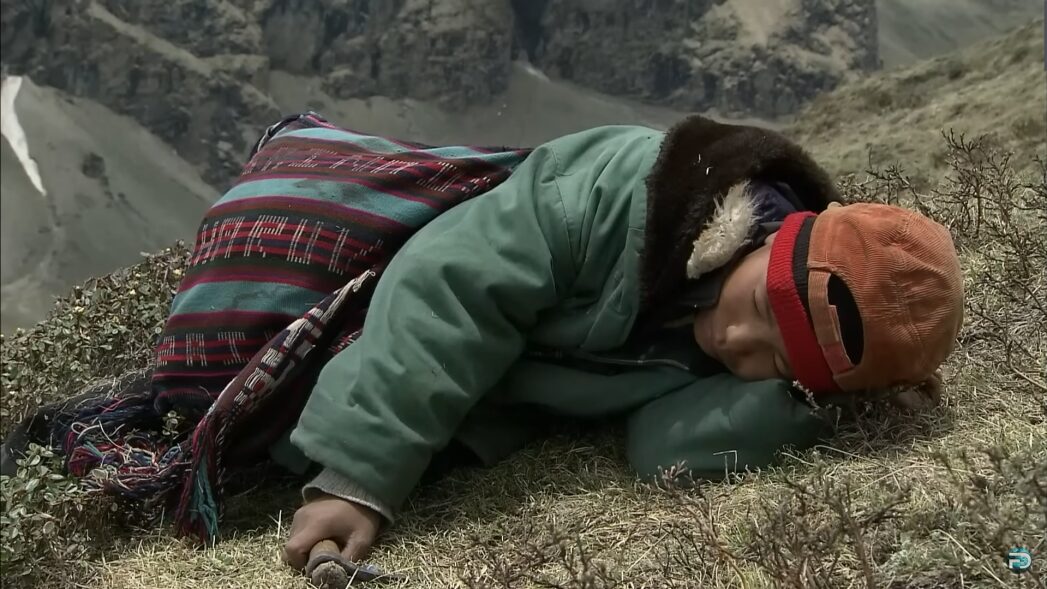
Raj, exhausted, sleeps on the mountainside while his father continues gathering the precious fungus. Photo: Screenshot
Strange markets
The film also follows Dhanchandra, a young man on a dangerous round-trip journey from Kathmandu to the slopes. An agent for a wealthy buyer, he goes from tent to tent, collecting a full kilo of Yarsagumba, and taking pictures of the people who harvest it.
Depending on quality, each Yarsagumba is bought for between 100 and 300 rupees (about $0.70 to $2). This is only the first of several exchanges before it finally reaches Hong Kong medicine shops. With each exchange, the value rises.
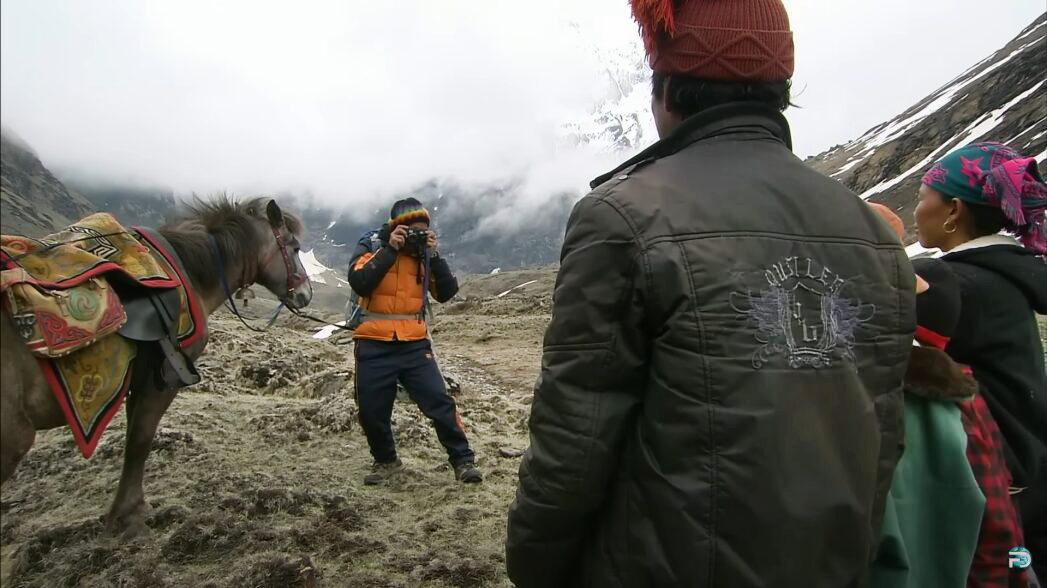
After paying for their harvest, Dhanchandra takes a picture of Suga Lal and his family. Photo: Screenshot
The agent gathers enough of the fungus to fill a large trunk before turning back, hiring soldiers to guard him along the way. This much Yarsagumba, the film tells us, is worth 300,000 euros in Hong Kong, the equivalent of 300 years’ pay for the average Nepalese.
Stark contrast
Following Dhanchandra and his treasure, the film moves from the slopes of the Himalaya to the busy streets of Kathmandu. An exporter takes the precious cargo off Dhanchandra. The film follows it to a wealthy Hong Kong neighborhood. The contrast between the lives of the harvesters and the buyers could not be more stark.
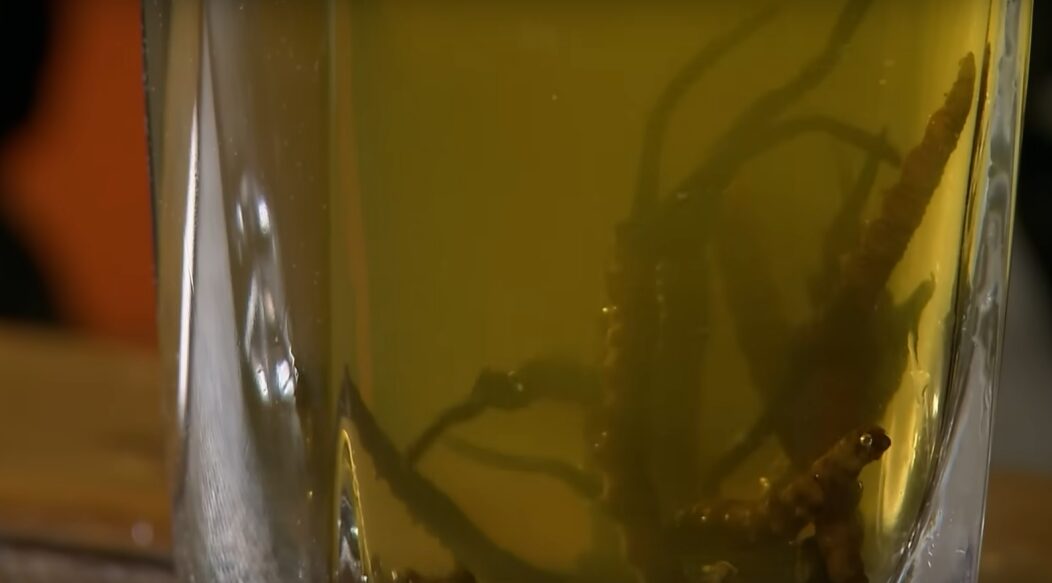
Medicinal Yarsagumba cocktail, about to be served to Hong Kong socialites at a party. Photo: Screenshot
This odd juxtaposition is allowed to settle heavily on the viewer as the film draws to a close. We return for a last time to the isolated village of Suga Lal, who worries about the future of the trade. Every year, he and his loved ones risk their lives on the mountain. But without the Yarsagumba, they have no way to make money. As the camera pulls out, the mountains, at least, remain.
